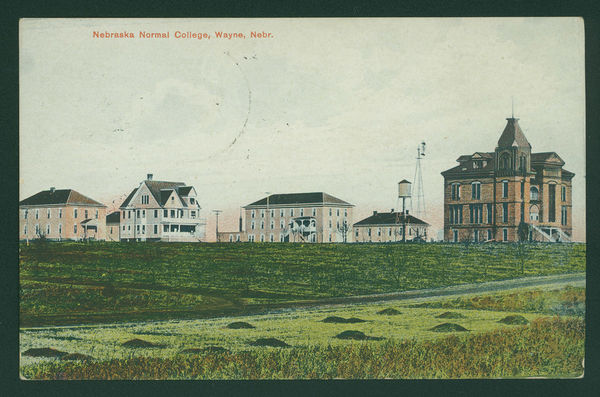Location
1111 Main St, Wayne State College, Wayne County, Nebraska
View this marker’s location 42.240700, -97.01476
Marker Text
The Nebraska Normal College was founded on this site in 1891 as a private institution. It was largely the creation of one man, Professor James M. Pile. The State Legislature in 1909 appropriated funds to purchase the campus, and in 1910 the College opened under State auspices. Its original mission was the same as that of its predecessor college–teacher education in a two-year curriculum. Wayne State College became a four-year degree granting institution in 1921. It has since expanded its program to include study leading to liberal arts and Master’s degrees. The cornerstone nearby came from the Commerce and Arts Building, which was located in the vicinity of this marker. The bell came from the first building of the Nebraska Normal College. John G. Neihardt, later Poet Laureate of Nebraska, rang this bell in the 1890’s to signal times for dismissal and convening of classes. With this employment he earned most of his college expense money. In its present location the bell was rung for many years to announce victories in inter-collegiate athletics. Wayne State College is proud of its graduates, among them outstanding educators, members of the United States Congress, and a governor of Nebraska.




